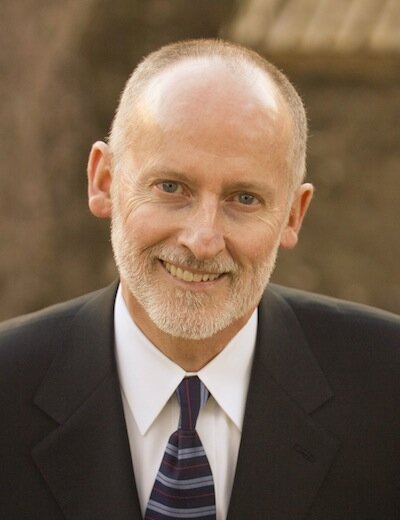
What would you do if, during the time you were chair of the Seattle City Council’s public safety committee, the Seattle Police Department were the subject of an eight-month-long Department of Justice inquiry that found* the “Seattle Police Department (SPD) has engaged in a pattern or practice of excessive force that violates the Constitution and federal law”?
That’s the awkward position the Council’s Tim Burgess finds himself in. As he departs as chair, handing the Lewis Carroll-like compendium of public safety, civil rights, and technology over to Bruce Harrell, Burgess offers a policy essay (pdf) that is remarkable in its deft retargeting of what the city’s public safety concerns actually are. (Harrell’s first fire-fighting call? Dealing with the aftermath of the suicide of a police officer arrested in a drug evidence sting.)
But first, it’s not true that the public safety committee fiddled while South Seattle and Belltown burned–Burgess went on record often during his tenure pushing for greater openness from the police department to civilian oversight. Here he is in September 2010:
What I’ve come to realize is that police agencies that enjoy the most trust and confidence of their communities are those that are proactively transparent. . . they are the police agencies who on their own reach out to the community and invite dialogue, scrutiny and review. They don’t wait for others to impose these conditions; they lead the way themselves.
As this matrix of policy recommendations for the SPD (pdf) makes clear, the Council had begun pushing for a flurry of “fixes” by late February of last year. It’s possible to be critical of those efforts without considering them to have been offered in bad faith; they don’t represent denial of a systemic problem so much as an inability to do much about it. Being chair of a Council committee is something less than a kingship, so you’re going to see more suasion than edict, especially when it comes to suggested changes that raise the hackles of an intransigent Seattle Police Officers Guild. Here, as elsewhere, you’ll see more “plastic-bag banning” than substantive reform.
While the Department of Justice did qualify its findings by saying that “SPD has already begun to implement a number of remedial measures,” for Burgess, remedial is clearly not the endgame. Throughout his public safety tenure he has argued for what could be called “evidence-based” policing. In his policy paper, he upends the question of whether the SPD is a Brute Squad variant, and asks instead whether “cops and robbers” law enforcement inevitably produces a frayed trust between the police and the people they try to sort into law-abiding and law-breaking camps.
In Burgess’s view, the primary goal is crime prevention–that is what gives people trust in their police. A crime, once it’s occurred, has already damaged that trust. The citizen feels let down by police before they’ve even started investigating. Dante once called for a “new sweet style” that rigorously demonstrated the power of divine love; Burgess has in mind a new law enforcement philosophy that just as rigorously demonstrates the power of the idea of order:
This new philosophy should focus on the policing of those micro-places where crime is concentrated and anchored; focus significant resources on persistent, high frequency offenders; introduce science-driven and evidence-based strategies to prevent crime, especially street crime and disorder; enhance increase crime tracking, data mining and analysis capabilities; restore the value placed on the generalist first-responder police officer; change how officers are selected, trained, managed and supervised to ensure the values and foundational principles of Constitutional policing and restorative justice are practiced; and, implement a problem-oriented policing model throughout the Police Department that views members of the community as valued and strategic partners in preventing crime.
Data-mining detectives couldn’t sound more Seattle, but Burgess is careful to give credit where credit is due: “Other cities, in particular New York City, have proven false the widely held belief that a certain level of crime is normal and should be tolerated in large metropolitan cities.” (That’s not to say that the NYPD has subsequently driven out scandal from its ranks.) Because public order is a kind of unifying security blanket, Burgess calls into question the division of crime into major and minor categories, at least when it comes to the public being served. Very few people who have been robbed say to themselves, “I still feel secure alone at night because I wasn’t killed.”
Conversely, argues Burgess, high frequency offenders don’t feel a pressing need to pigeonhole themselves as major/minor criminals:
Last summer, police officers in the Belltown neighborhood compiled the criminal histories of high frequency offenders they regularly encounter. They found 54 individuals with a combined total of over 2,700 lifetime arrests, an average of 50 per person. These individuals had 877 convictions for felonies and misdemeanors, an average of 16.2 per person, for everything from murder, rape and robbery to burglary, child molestation, drugs and theft.
You don’t need a cultural revolution to get “real police” on board with ending catch-and-release for people with arm’s-length rap sheets, but the concept of policing “micro-places” is a little trickier. As Burgess is at pains to point out, it’s not about a police car parked at a problem corner, but about an analysis of the network of factors that make that corner hospitable to criminal traffic. (Why Third Avenue instead of Second or Fourth?) It’s a dynamic inquiry, rather than a tautological person-centered (“Third attracts scumbags”) one. That’s all well and good, but it may require a dynamic kind of police leadership, as Burgess admits: “We should change how we select, train, motivate, supervise, reward and promote our police officers.”
Publicola wonders if this “parting shot at the SPD” isn’t a bit of policy-rattling in advance of a mayoral run. But taken at face value, it represents the culmination of Burgess’s thinking on the subject, at far greater depth than is necessary for mayoral aspiration. (In fact, it’s as likely in its detailed thoughtfulness to hinder as help–a mayor’s concern is his police chief’s public safety policy, not his own.) It may be reflexive to filter public service gestures in terms of political cui bonos, but in this case we’d be robbing ourselves of obviously substantive policy work if we did.
Is Seattle interested in reinventing policework? Or are we more interested in talking around it?
*Per the DOJ:
Based on a randomized, stratified and statistically valid sample of SPD’s use of force reports from Jan. 1, 2009, to April 4, 2011, factual findings include:
The Justice Department also found that a number of long-standing and entrenched deficiencies have caused or contributed to these patterns or practices of unlawful or troubling conduct, including the following:
